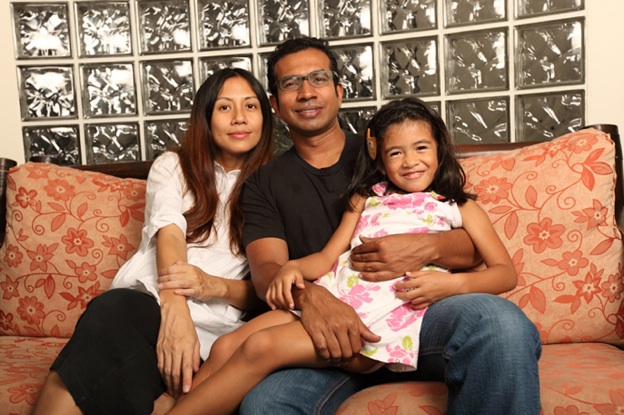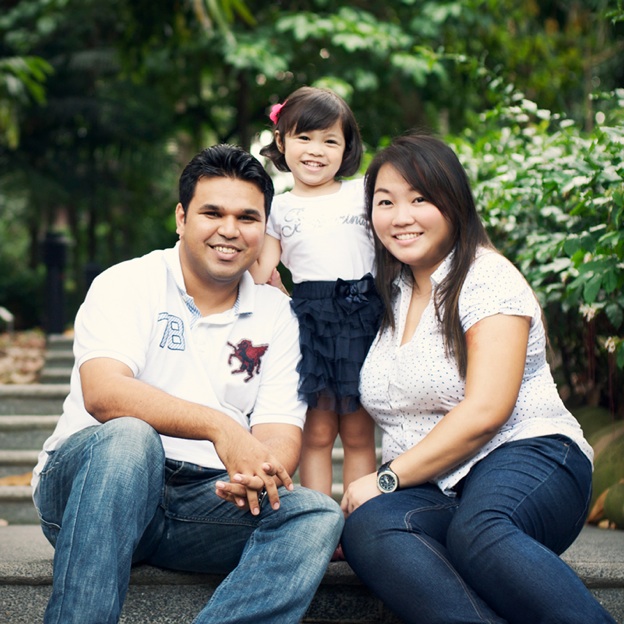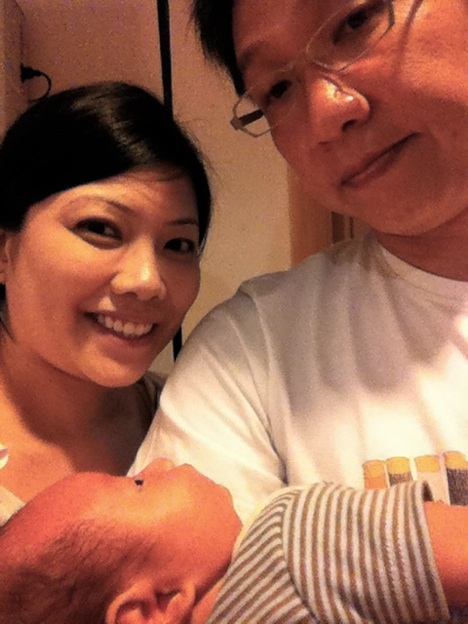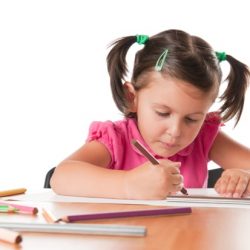SingaporeMotherhood | Preschooler & Up
June 2012
One Baby, Two Cultures

It’s tough answering the “Who am I?” and “Where do I come from?” questions that our kids pose, and even more challenging to help them forge an identity when mum and dad hail from different countries, resulting in the young ones having to straddle two cultures. Five couples share their insights on what it is like to raise children in a bi-racial environment.
Going Beyond Skin Colour

“I wish I were fairer!” is what six-year-old Layla Rogers used to say. Layla’s mum Evelyn, a freelance editor, is Chinese. Her dad Alfred, a real estate agent, is Indian.
[banner][/banner]
“Sometimes she wishes she were 100 per cent Chinese,” says Evelyn, who also has a nine-month-old son named Zion. “It’s funny how kids can pick up on certain attitudes and preferences, though I’ve never heard anyone around us making disparaging remarks about race or skin colour.”
Evelyn reminds her daughter that many of the people whom she loves are Indian. She has also used real-life examples to help Layla realise that beauty is not defined by a person’s skin colour.
Evelyn grew up in a small family that was happy to function as a stand-alone unit. Her husband’s family on the other hand, is the total opposite. “They share both blessings and burdens – a lottery win is evenly distributed among the families, and anyone in trouble can count on everyone working together to help him or her through a trying period.”
“I hope that my children will learn the importance of being independent and working for your own success, but also look out for their loved ones and give generously when the situation calls for it – two very different, but equally important set of values.”
Broader Perspectives

American Carrie Schlauch is married to Researcher Mano Ramakrishnan, a Singaporean Indian-Chinese. The couple has two children: Sebastian, three, and Roxanna, 11 months.
The family celebrates customs from both Singaporean and American cultures – they attend family gatherings at Deepavali and Christmas and put up decorations during the Lunar New Year. Carrie makes traditional foods like ‘tofurky’ (vegetarian “turkey” roast) for Thanksgiving, and the Fourth of July (the United States’ Independence Day) is always celebrated.
Carrie, an Adjunct Professor, believes that raising her children with a broader prospective gives them the advantage of being able to think about different issues in a more comprehensive way. However, she also worries about its potential drawback, that their identity – their race, ethnicity, culture and nationality – will be slightly watered down.
“Both of our children are enrolled at a childcare centre that is fairly multi-cultural… it is my hope that while they’ll respect such differences, they’ll also see a person’s culture or race as just a small part of the individual. We don’t often speak directly to our children about it; we’d prefer them to it as insignificant (though not necessarily unimportant),” she says.
“However, we certainly make their cultural heritage clear – our children have a Western given name, a Chinese middle name and an Indian family name,” Carrie adds.
Uncertainty About Belonging

Australian-Thai couple Vanessa Wright and Wanlop Navepap live in Singapore with their four-month-old son, Ari.
The couple feels that being of mixed race could leave an individual feeling uncertain as to where he or she ultimately belongs. They hope that Ari will have a strong sense of belonging in both Australia and Thailand, and maintain close bonds with both sides of his family.
As Ari grows up, they intend to expose him to life in Australia and in Thailand, allowing him to enjoy, respect, and more importantly, feel a strong personal connection with both cultures.
Balance And Benefit

Four-year-old Falisha owns several baju kurongs and cheongsams. She helps to prepare kueh-kuehs at Hari Raya and participates in the “asking for forgiveness” sessions before visiting her relatives. She also enjoys the endless top-ups of sweet drinks and goodies during the Lunar New Year. Her mother, 31-year-old Sim Hui Chin, is Chinese. She is married to 33-year-old Muhammad Firdaus.
“My husband’s mum and siblings live with us, so the Malay culture is more dominant in our household. So far we have not had any trouble juggling both cultures but I speak to Falisha in Mandarin as often as I can to give her more exposure to the language.”
Hui Chin thinks that a good balance of both cultures is important – “You will see that your child will grow smarter and benefit from it, and that traditions won’t be lost to the newer generations.”
Uniquely Different

Eurasian Natasha Bounaparte, 28, grew up in a bi-racial family. She had a Eurasian mother and a Chinese father, and felt she wasn’t as ‘mainstream’ as her friends, who were mostly Chinese.
Now married to a Chinese man, the main lesson that she would pass down to her two-month-old son (and future children!) is that being different does not make him less of a person.
“I learnt that being Eurasian was unique and that it didn’t mean I was less of a person. That’s a good way to educate my own children on different races and nationalities so that they won’t get a ‘culture shock’ when they go to school. I would definitely make a conscious effort to explain to my kids why they are different from their friends. Being exposed to different cultures helps us adapt faster.”
All content from this article, including images, cannot be reproduced without credits or written permission from SingaporeMotherhood.
Follow us on Facebook, Instagram, and Telegram for the latest article and promotion updates.





